Huchuy Q’osqo
Check out the link above to read about Huchuy Q’osqo and 14 other Inca sites in and near Cusco!
Huchuy Q’osqo (Little Cusco in Quechua) is an ancient Inca city which belonged to the Inca Wiracocha. During the reign of Wiracocha (until about 1400), there was no strong army and he abandoned Cusco under threat from the Chanka, taking refuge in Huchuy Q’osqo. When the Chanka learned that Cusco was without a leader, they staged their attack. A young warrior, Cusi Yupanqi, led the people of Cusco to victory and was chosen as the next Inca ruler. As the new Inca ruler, he chose the name Pachecutec, which means Changer of the Universe. Afraid that Pachecutec would take revenge on him for abandoning Cusco, Wiracocha fled to Calca, became ill and died without ever returning to Cusco. Pachecutec was a hugely influential leader who centralized power in Cusco. He is also credited with most of the important constructions from Inca times.
Huchuy Q’osqo is in the Sacred Valley, to the north of Cusco. There are three ways to get there. I hiked from the village of Siwas, but you can also hike there on a different trail from Chinchero. The third way is straight up from the town of Lamay.
To get to the Siwas trailhead, take a colectivo from Cusco to Pisac, but get out in the town of Ccorao, before you get to Pisac. It’s only about half an hour from Cusco. Then ask around to find a taxi driver who will take you to Siwas or Patabamba. The trail actually starts in Siwas, but it’s easier to get a taxi driver to agree to take you as far as Patabamba, which is a larger town. It’s less than an hour walking from Patabamba up to Siwas but if you can get a ride it’s only about ten minutes.
Continue straight through the village and the road will become a trail as it leaves Siwas. Follow it across a few valleys, up over a pass and down into a narrow canyon. You are walking on the Qhpaq Ñañ, part of the system of Inca roads that link the former empire from Ecuador down through most of Chile and from the Pacific Ocean to high into the Andes through Bolivia. Some parts of the trail are stairs and stone lined paths, constructed by the Inca. In some parts the stones were taken to build houses or were washed away during landslides and not replaced when the path was restored.
The canyon you walk through is beautiful. In several parts, the stream runs across bedrock, carved and polished red sandstone reminiscent of the Four Corners area in the US. The Ministry of Culture is charged with maintaining the Qapaq Ñan and the little wooden bridges that you cross are kept in relatively good condition.
When the trail comes out of the little canyon you will be above the Sacred Valley once again. The canyon shortcuts a horseshoe bend in the Urubamba River. Below you, across the river, is the town of Lamay, where you will end up tomorrow.
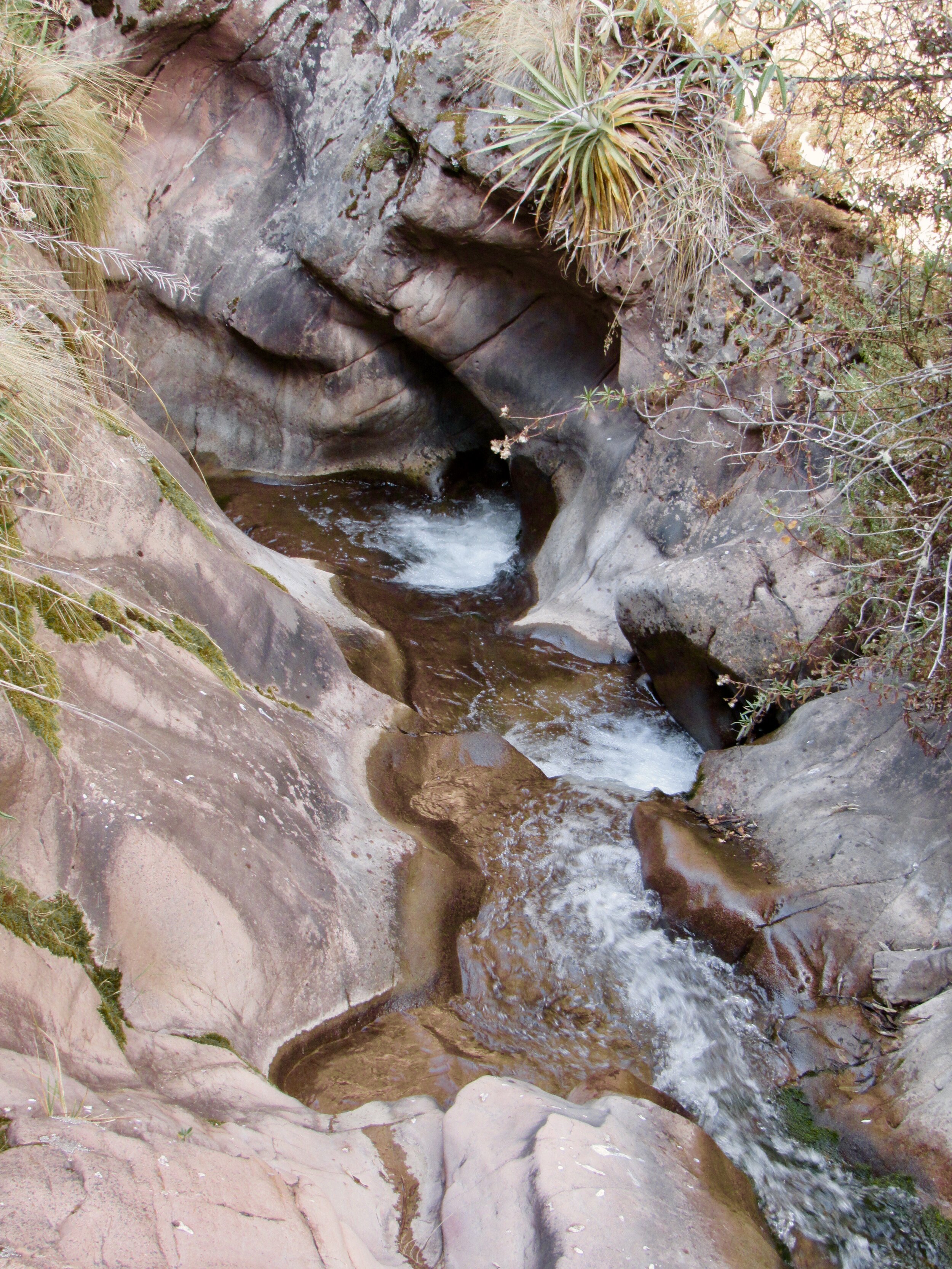
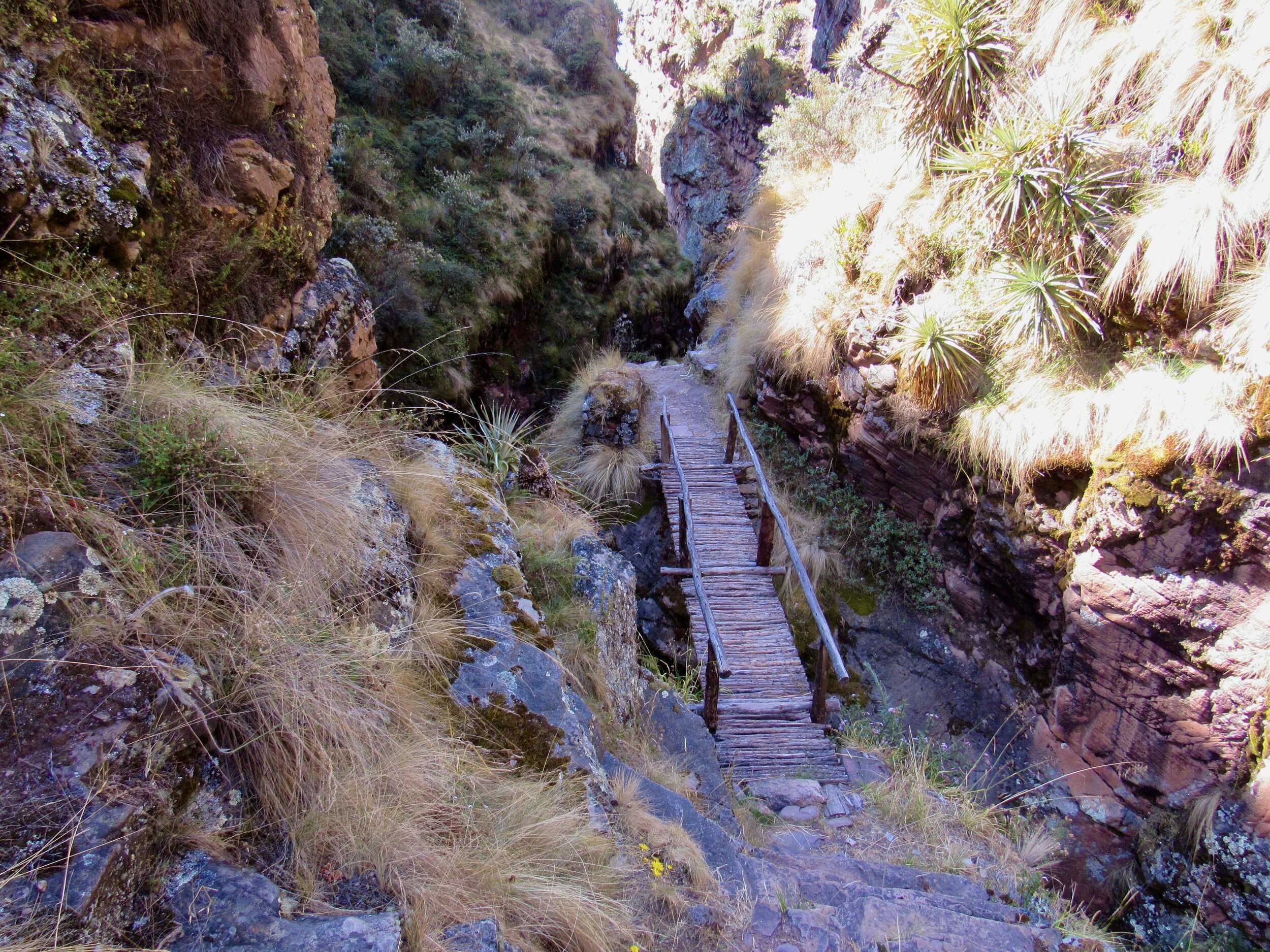
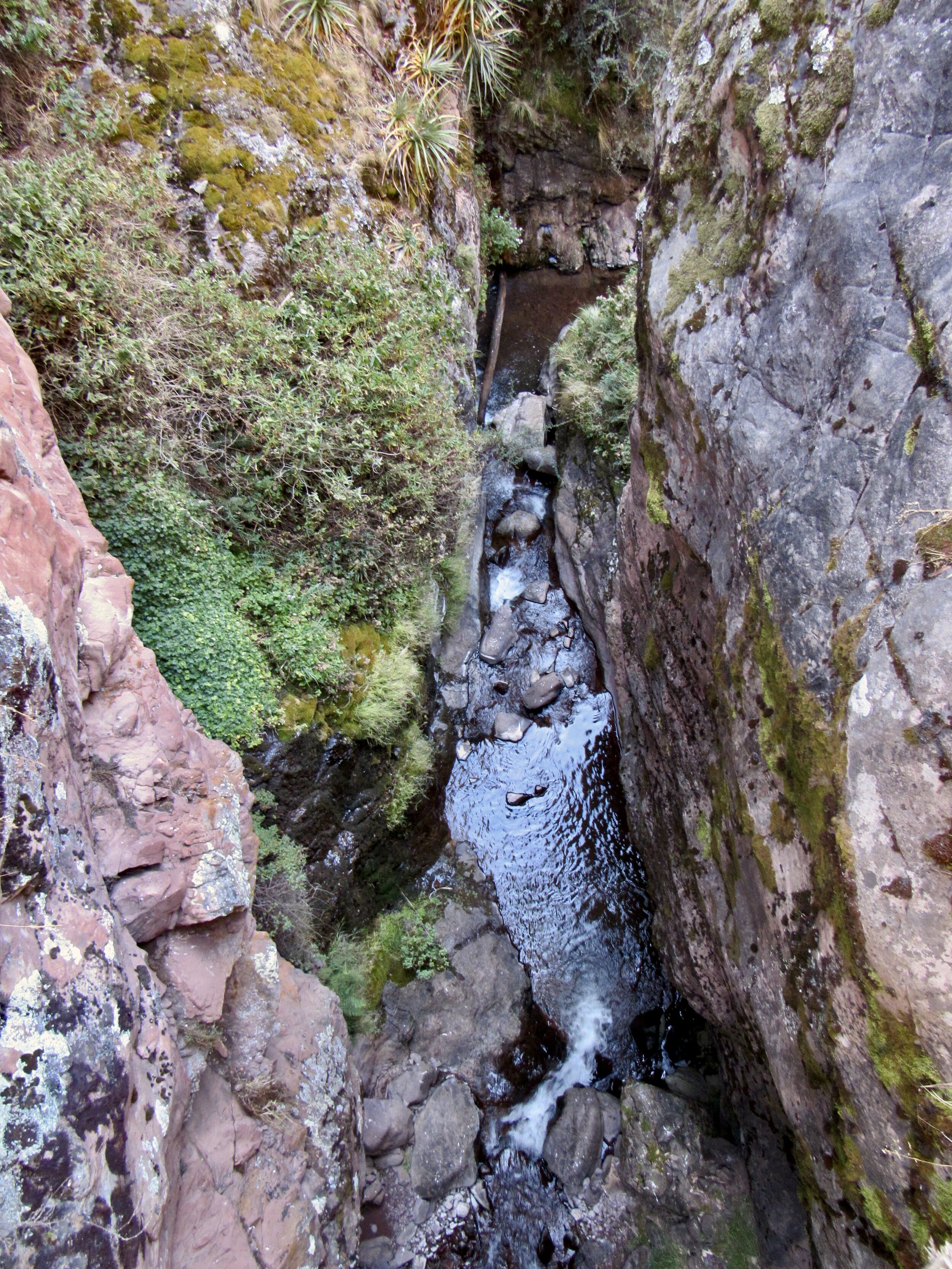
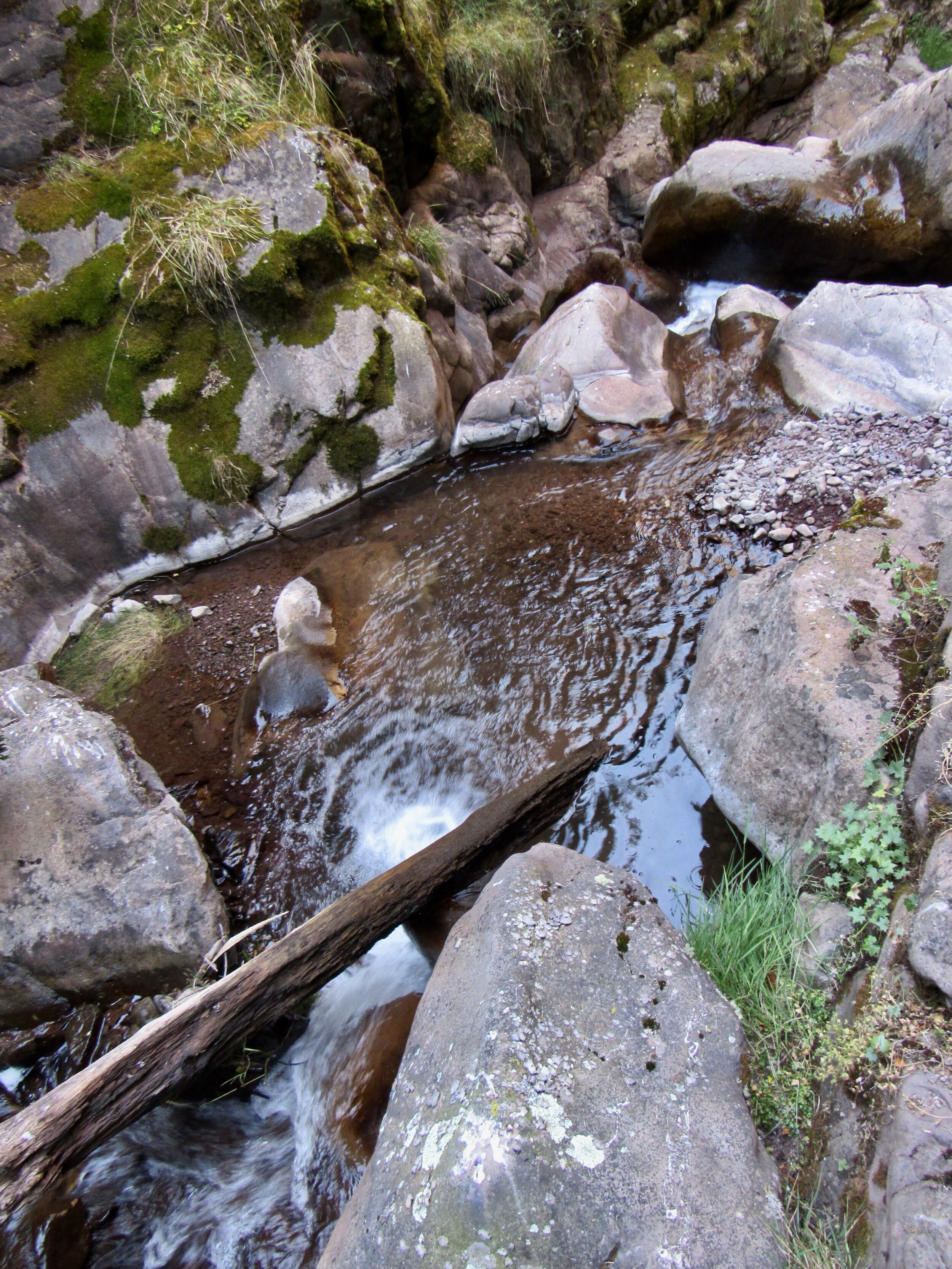
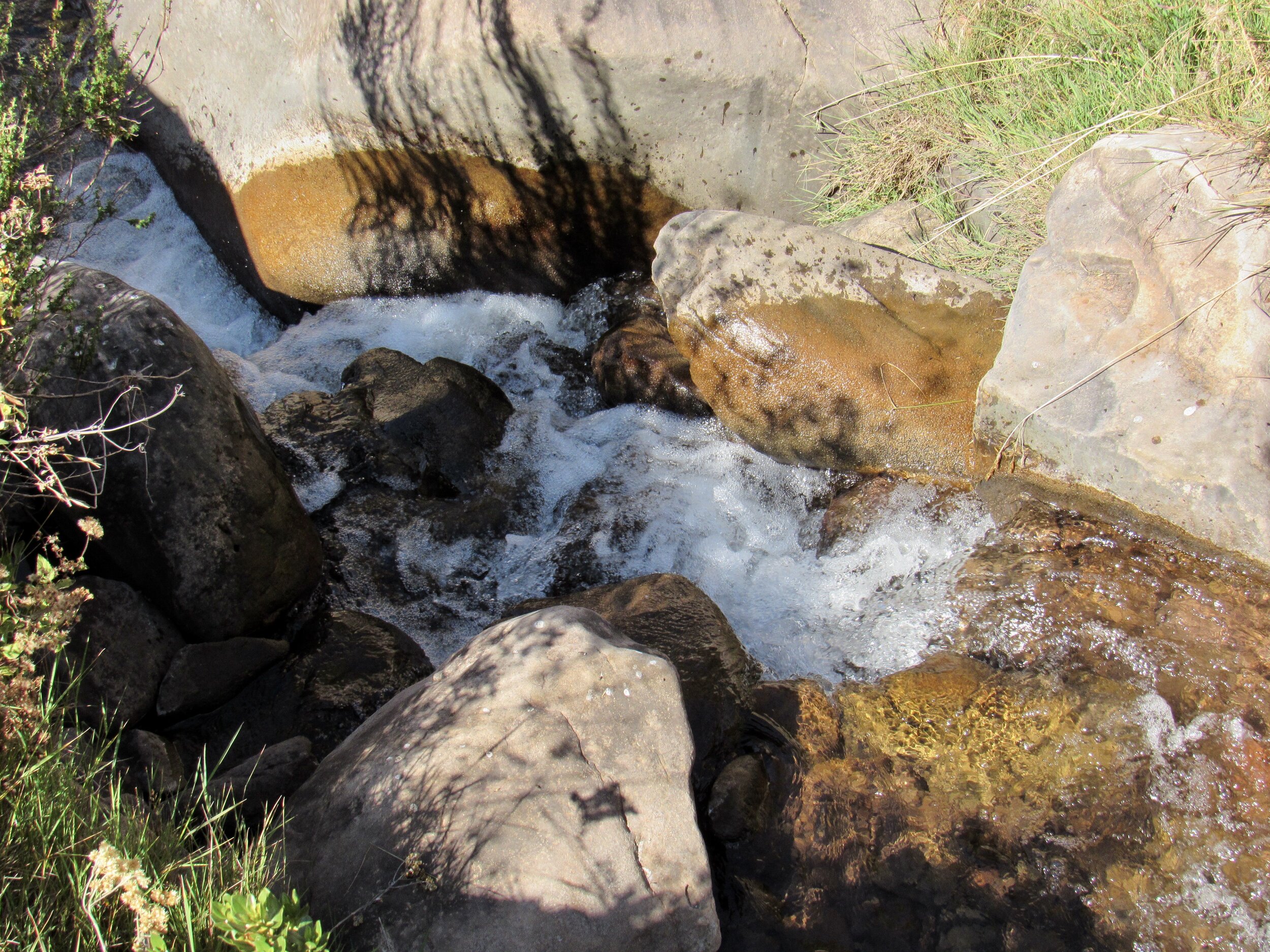
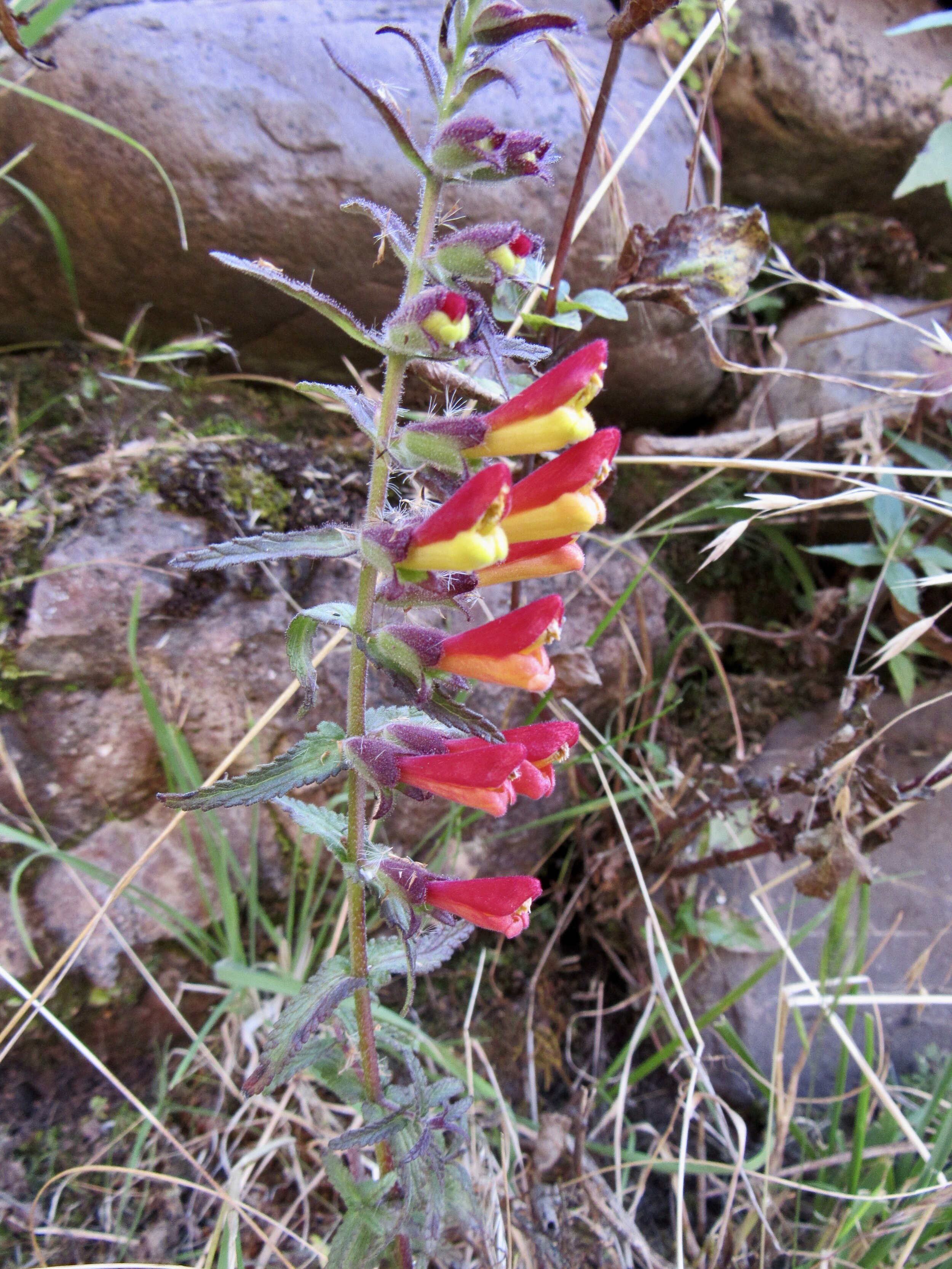

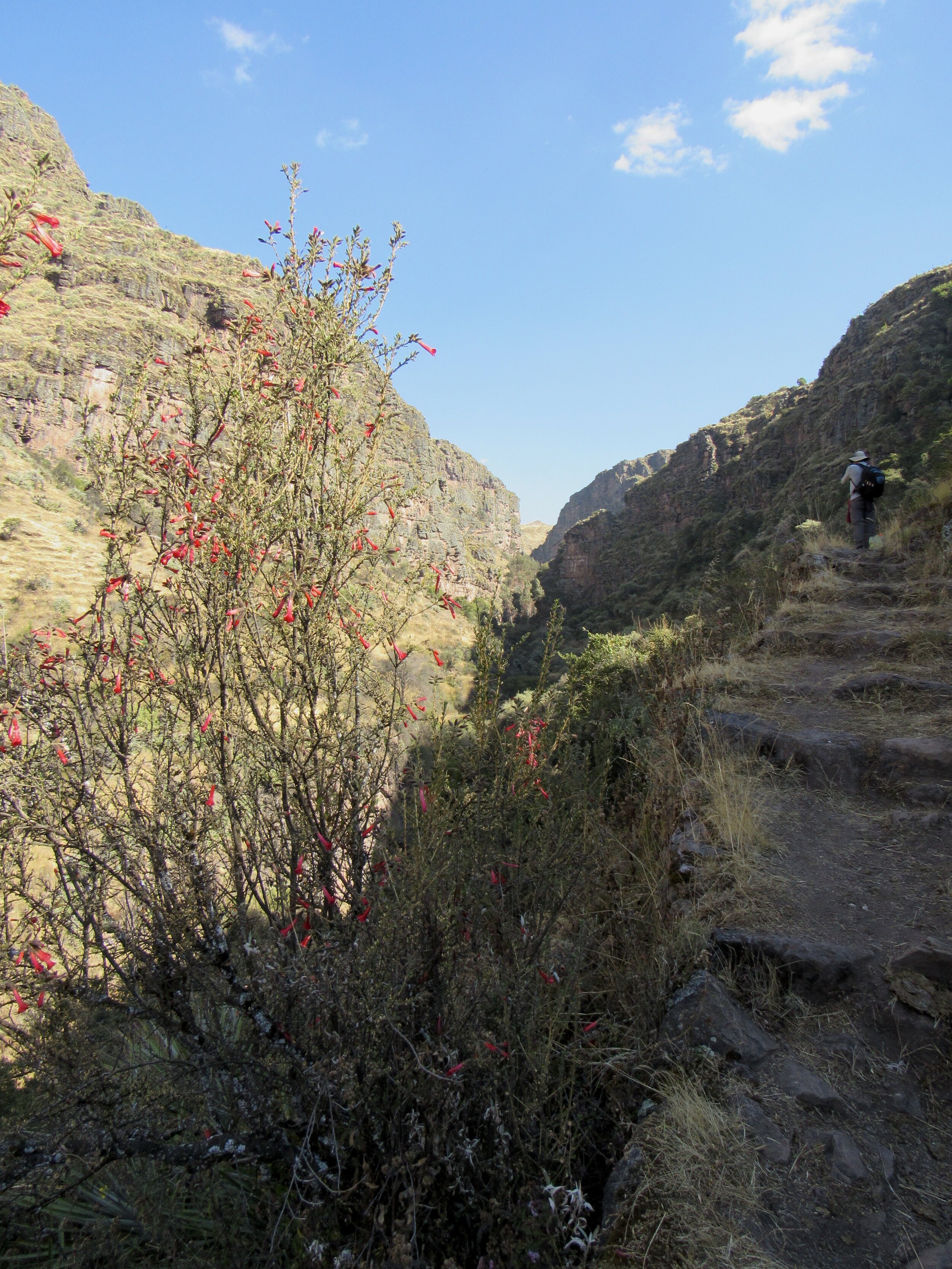
The trail takes you left, along the cliffs above the Sacred Valley and then down to Huchuy Q’osqo itself. The site comprises several different sections. The most obvious is the wide open terrace, which looks like a giant meadow. During Wiracocha’s time it was likely used as a ceremonial plaza. Above the plaza, the buildings that remain have been partially restored. They are constructed the same as many religious sectors of Inca cities. Downhill from the plaza are agricultural terraces. On the far side of the plaza are the best preserved buildings. The perfection of the masonry shows that they were likely Wiracocha’s residence.
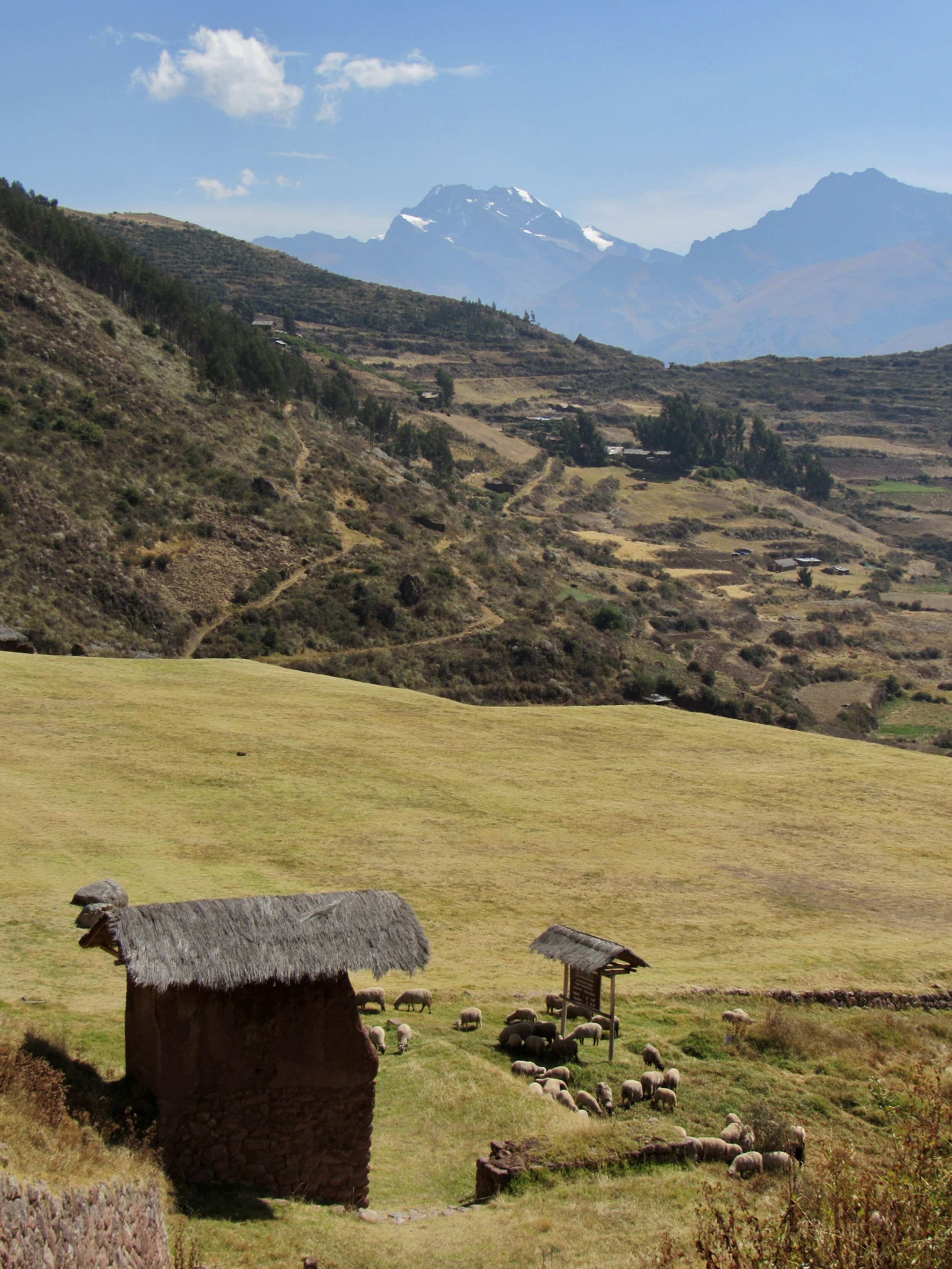
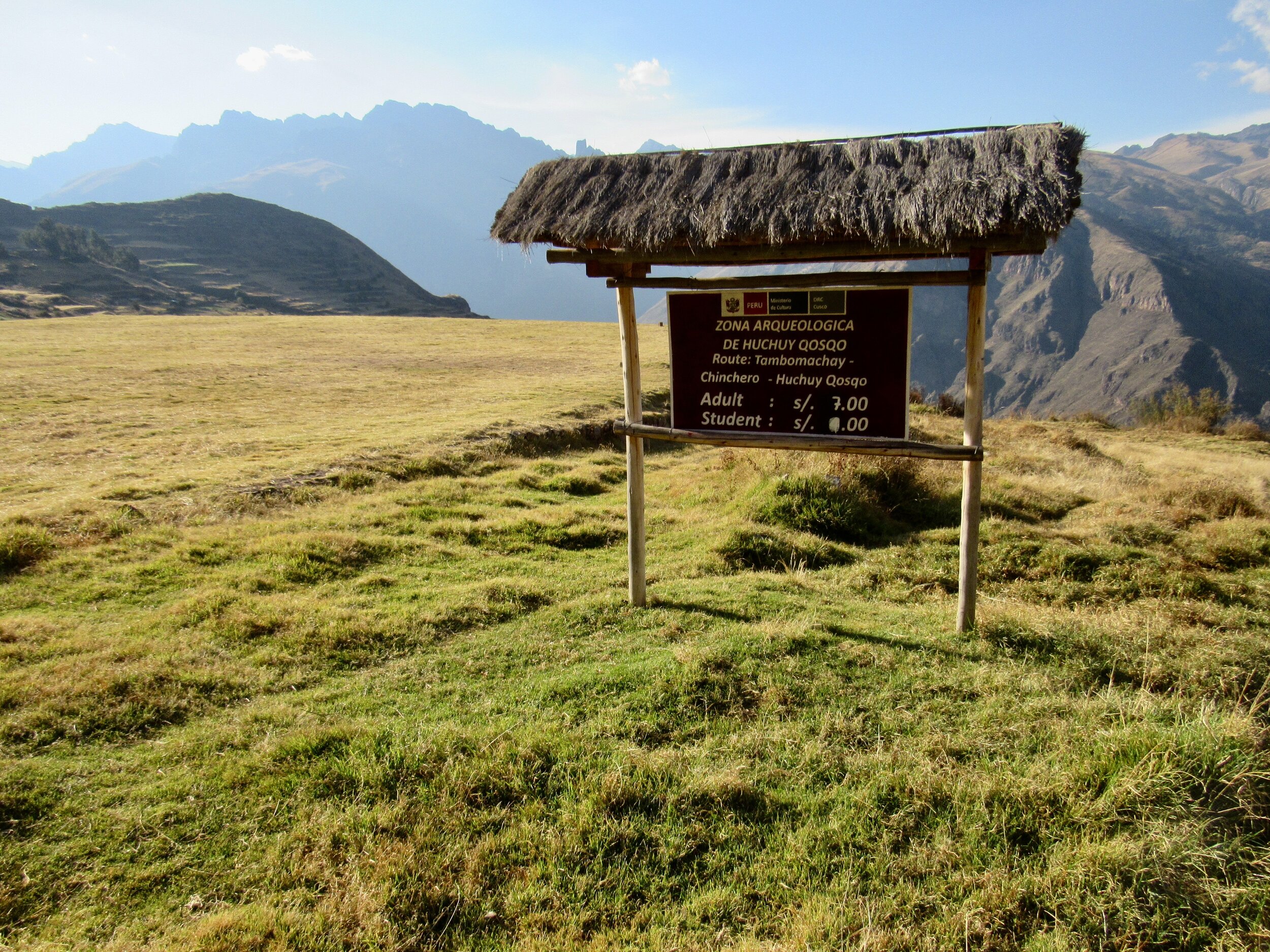
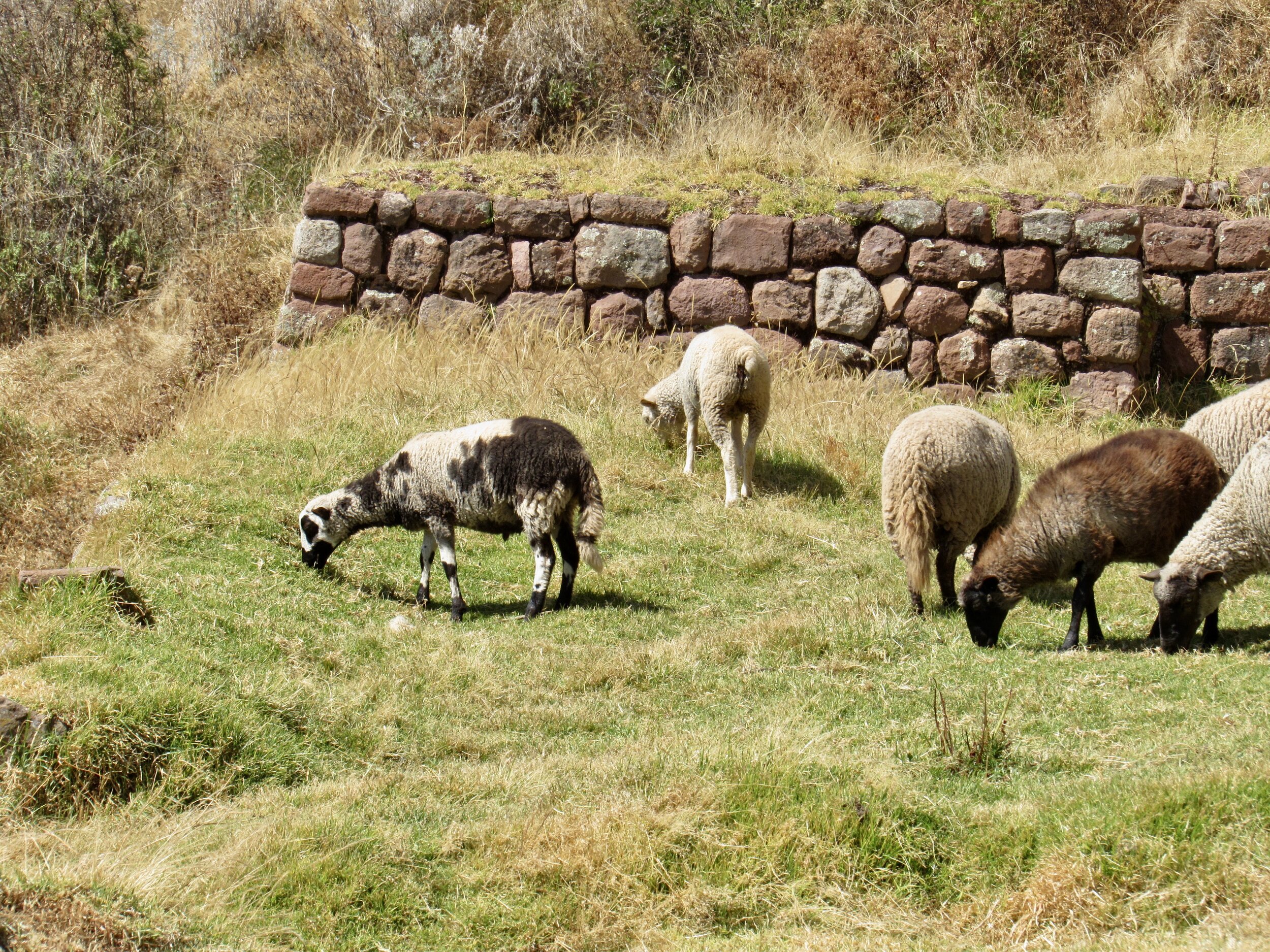
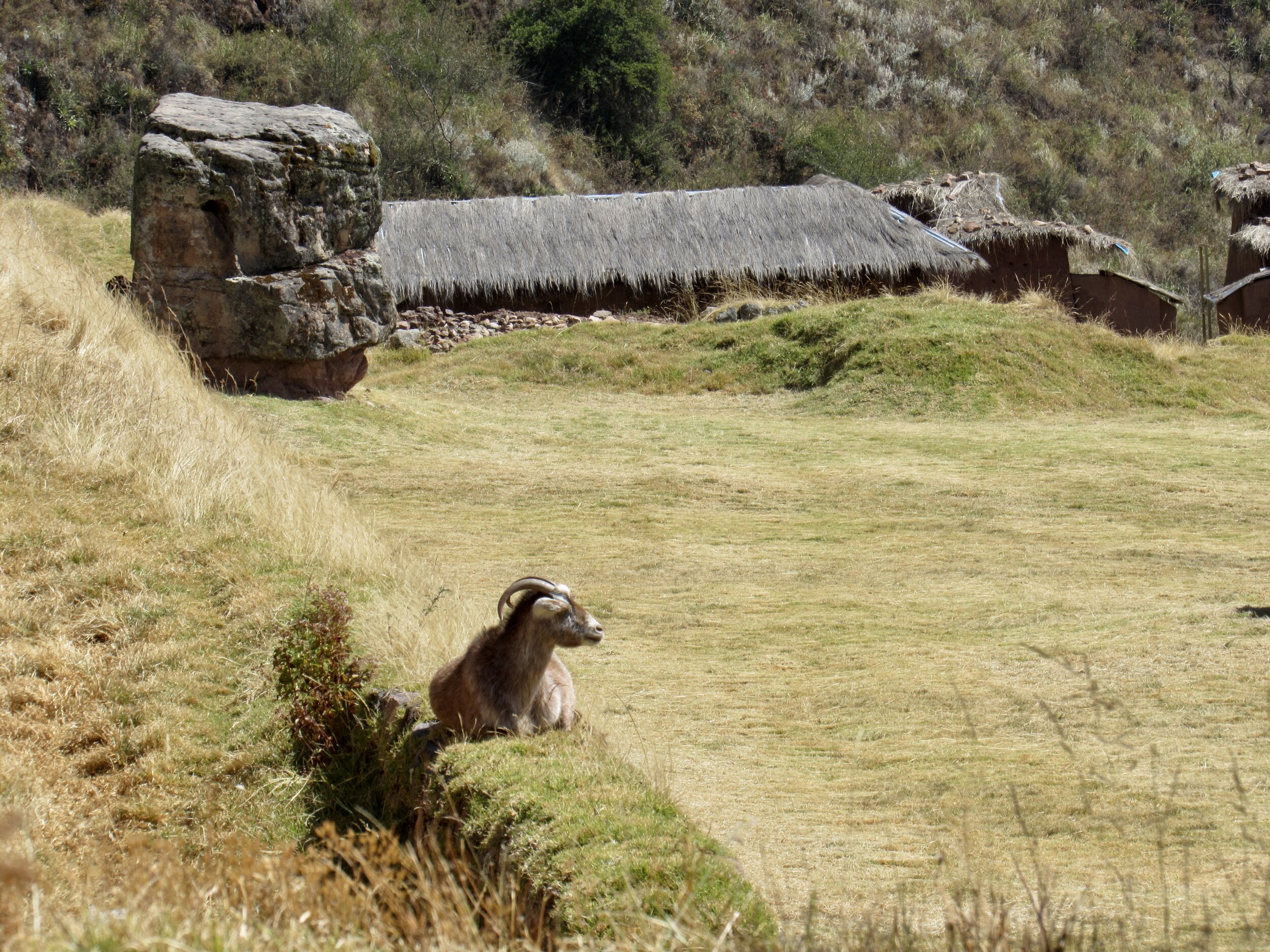
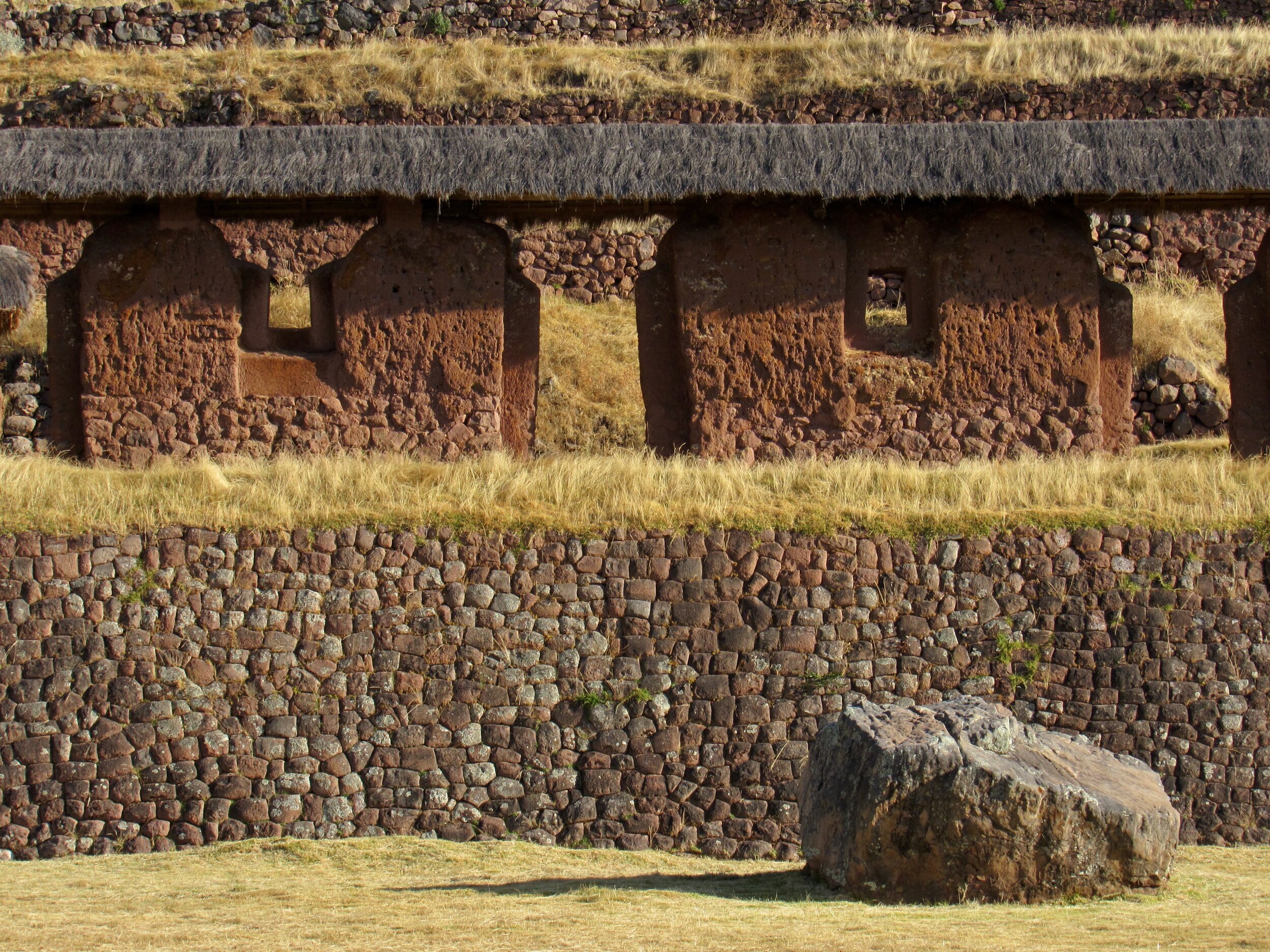
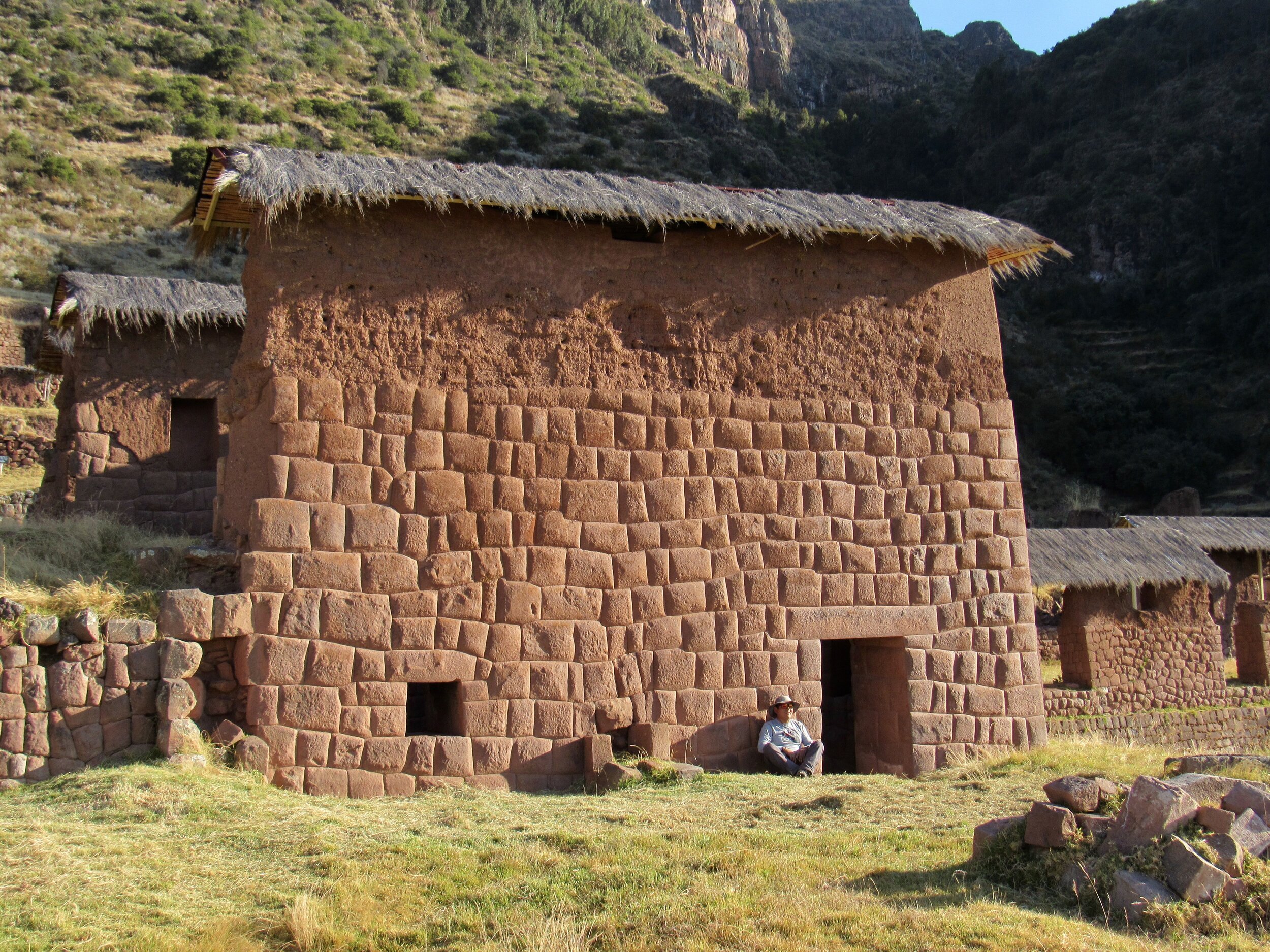
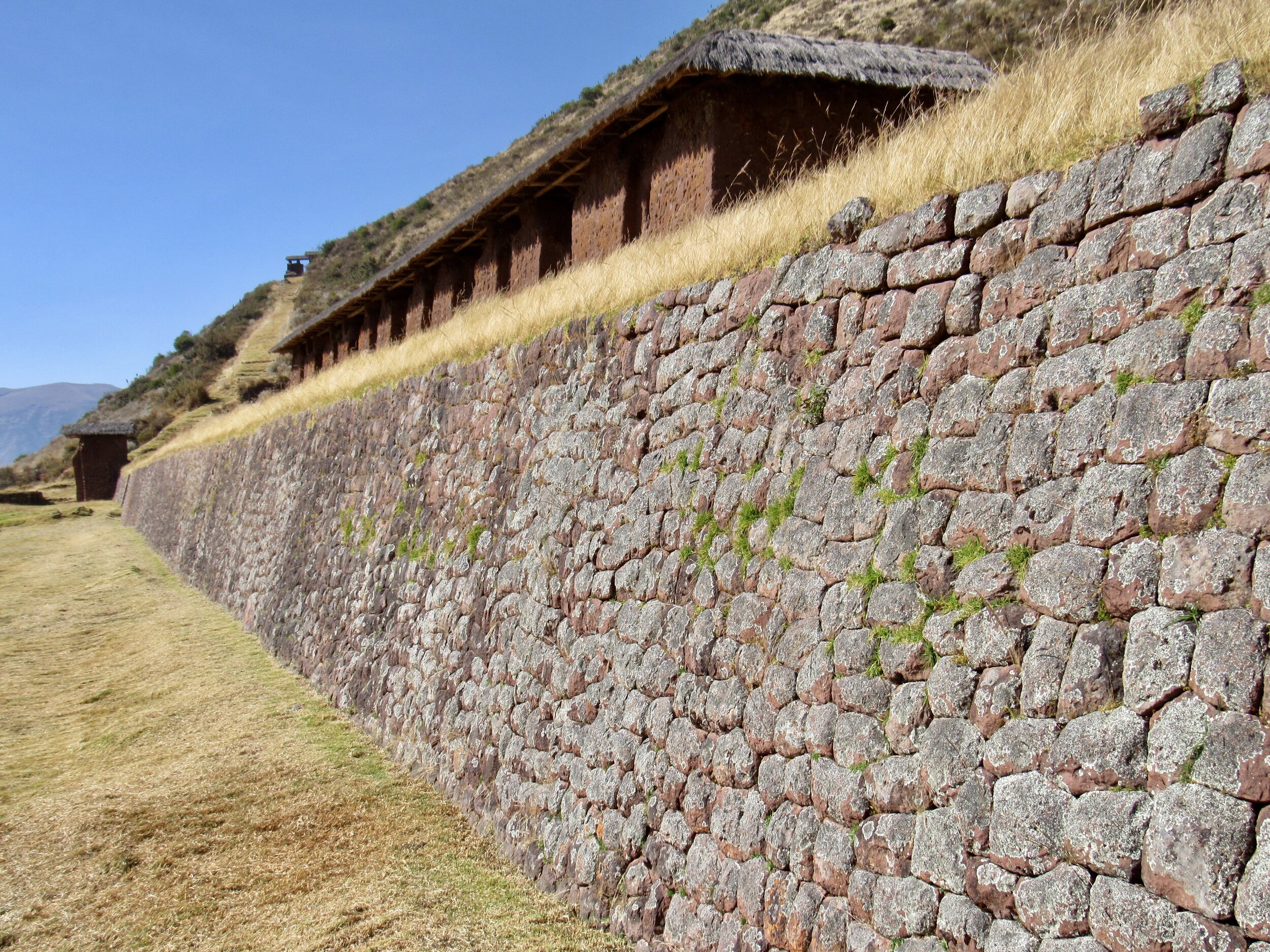
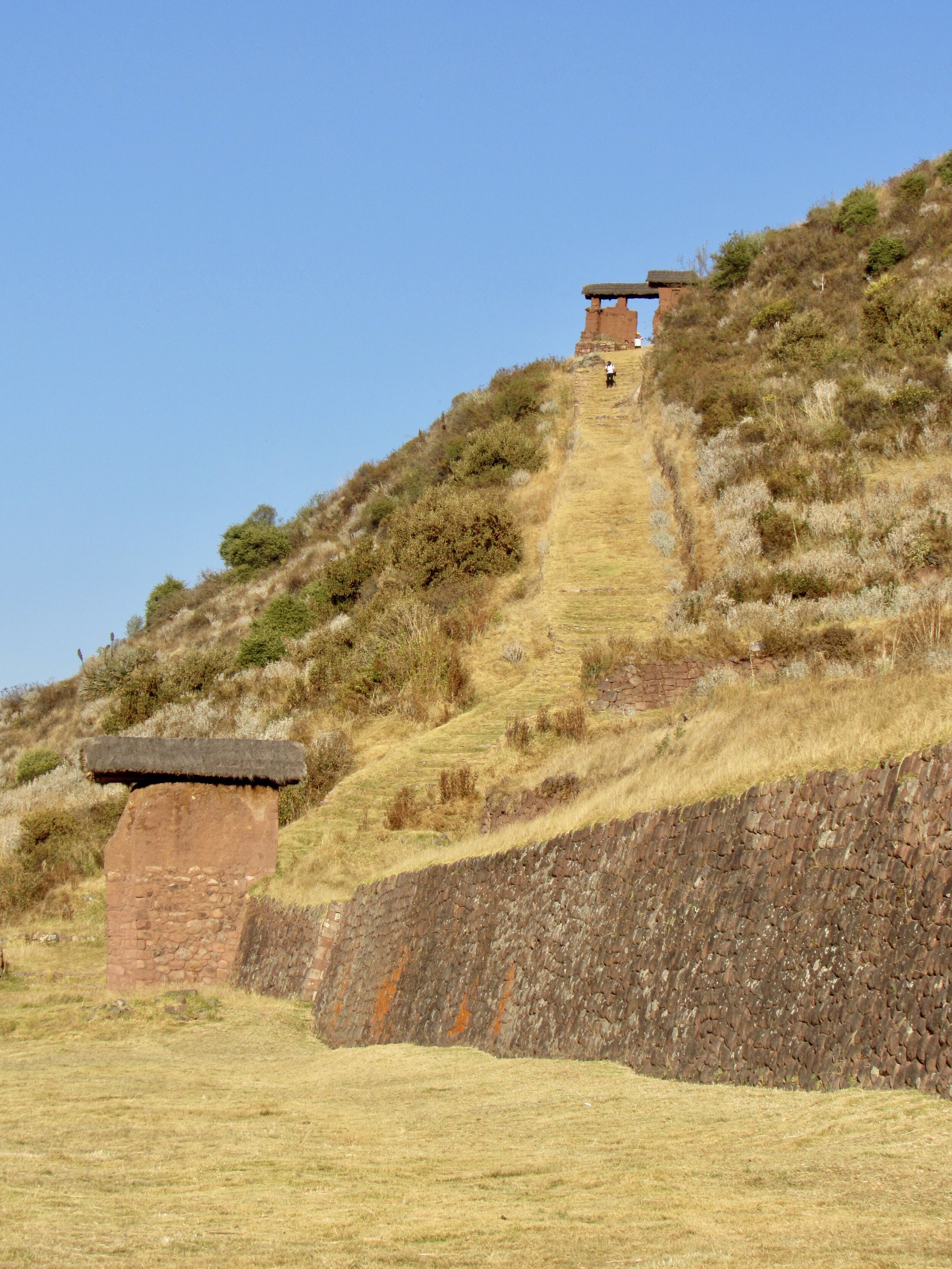
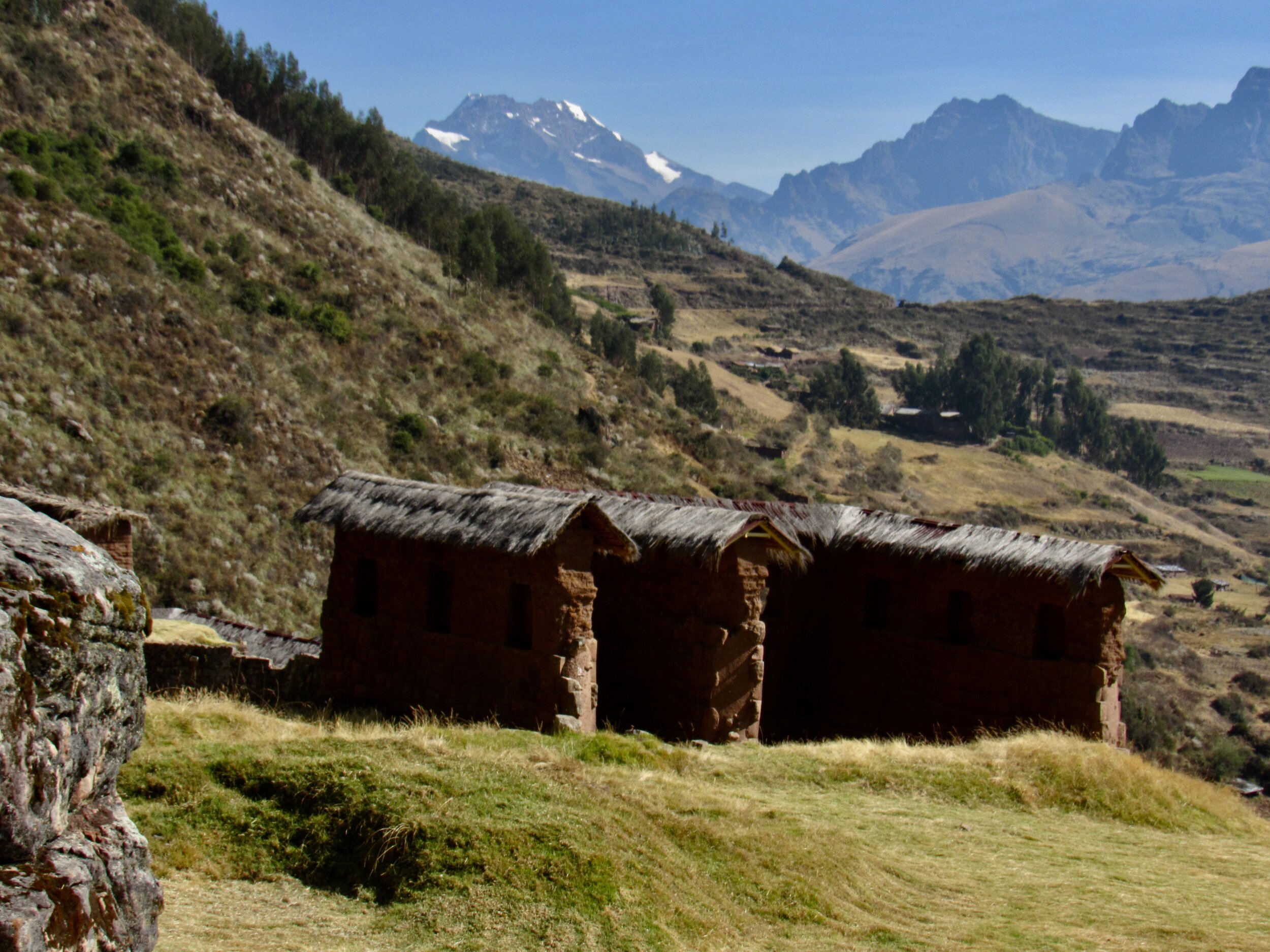
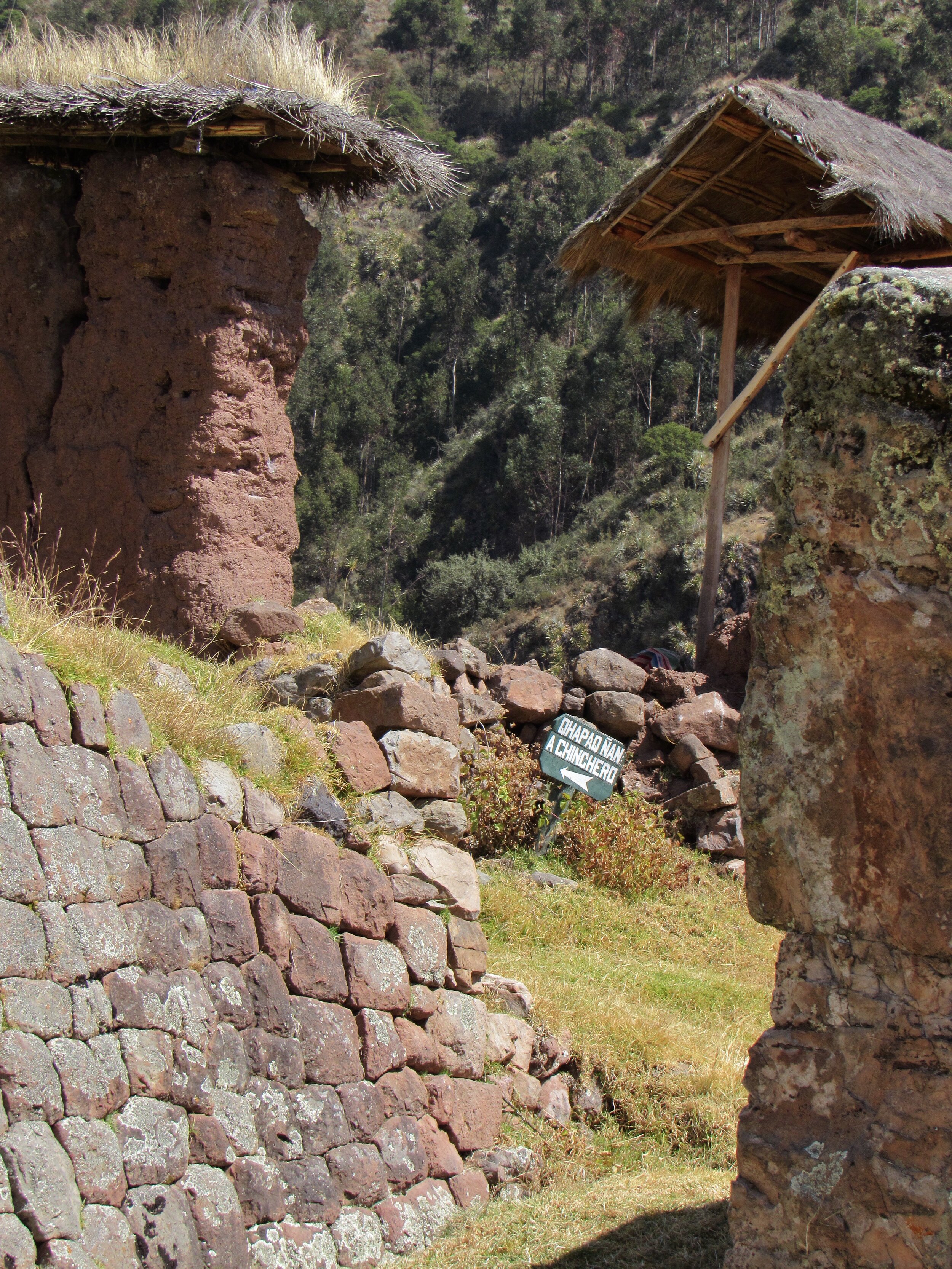
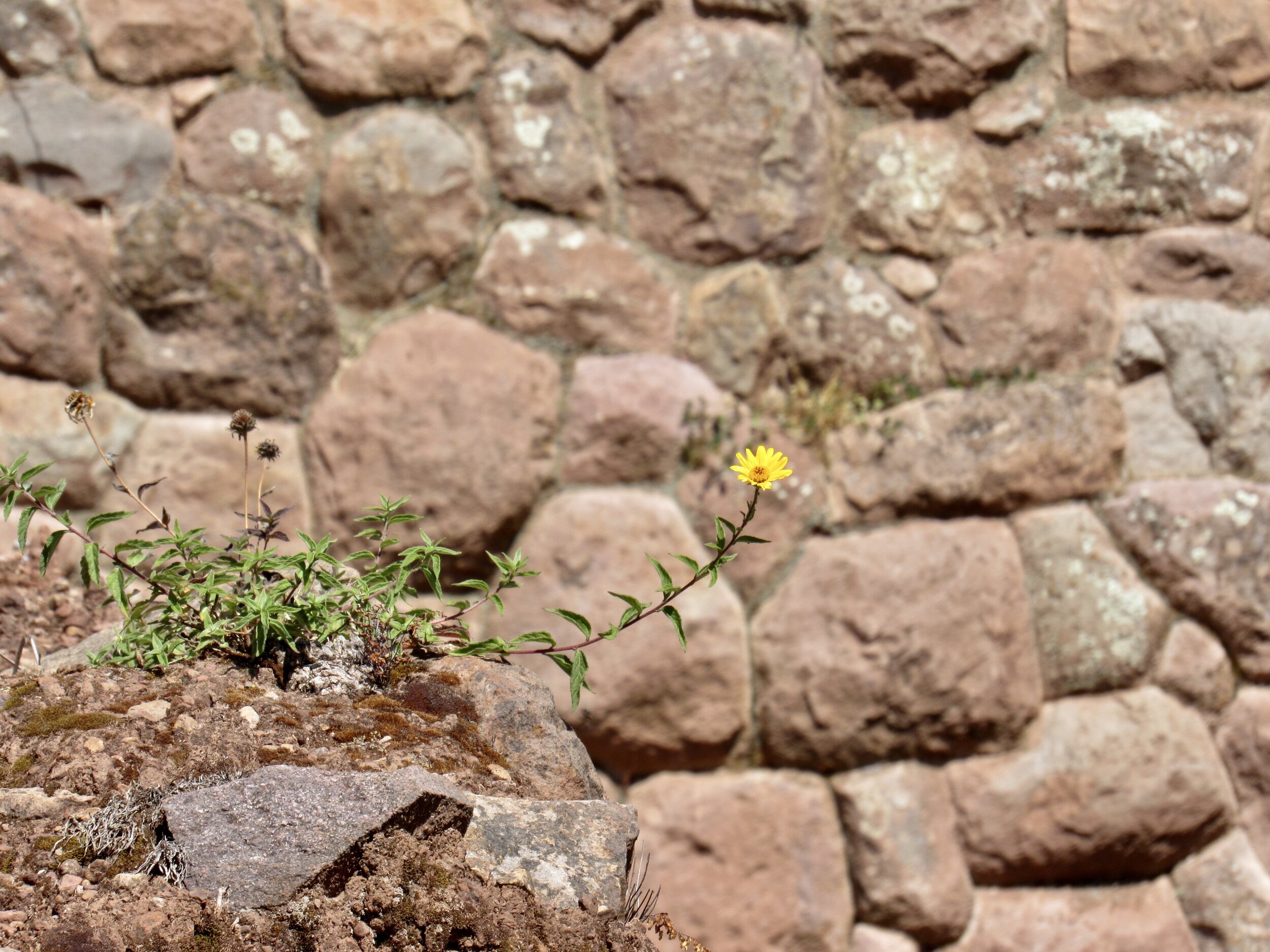
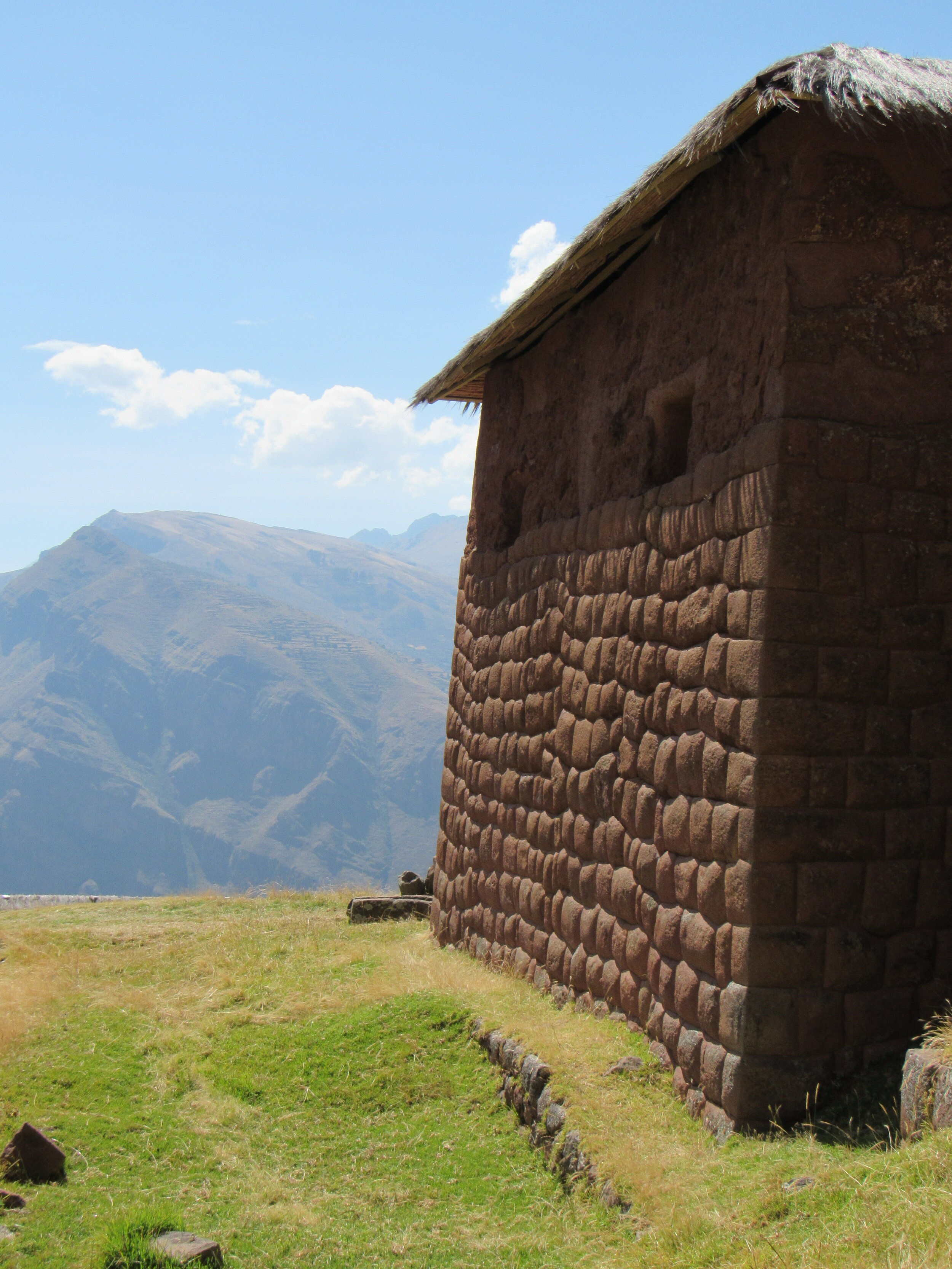
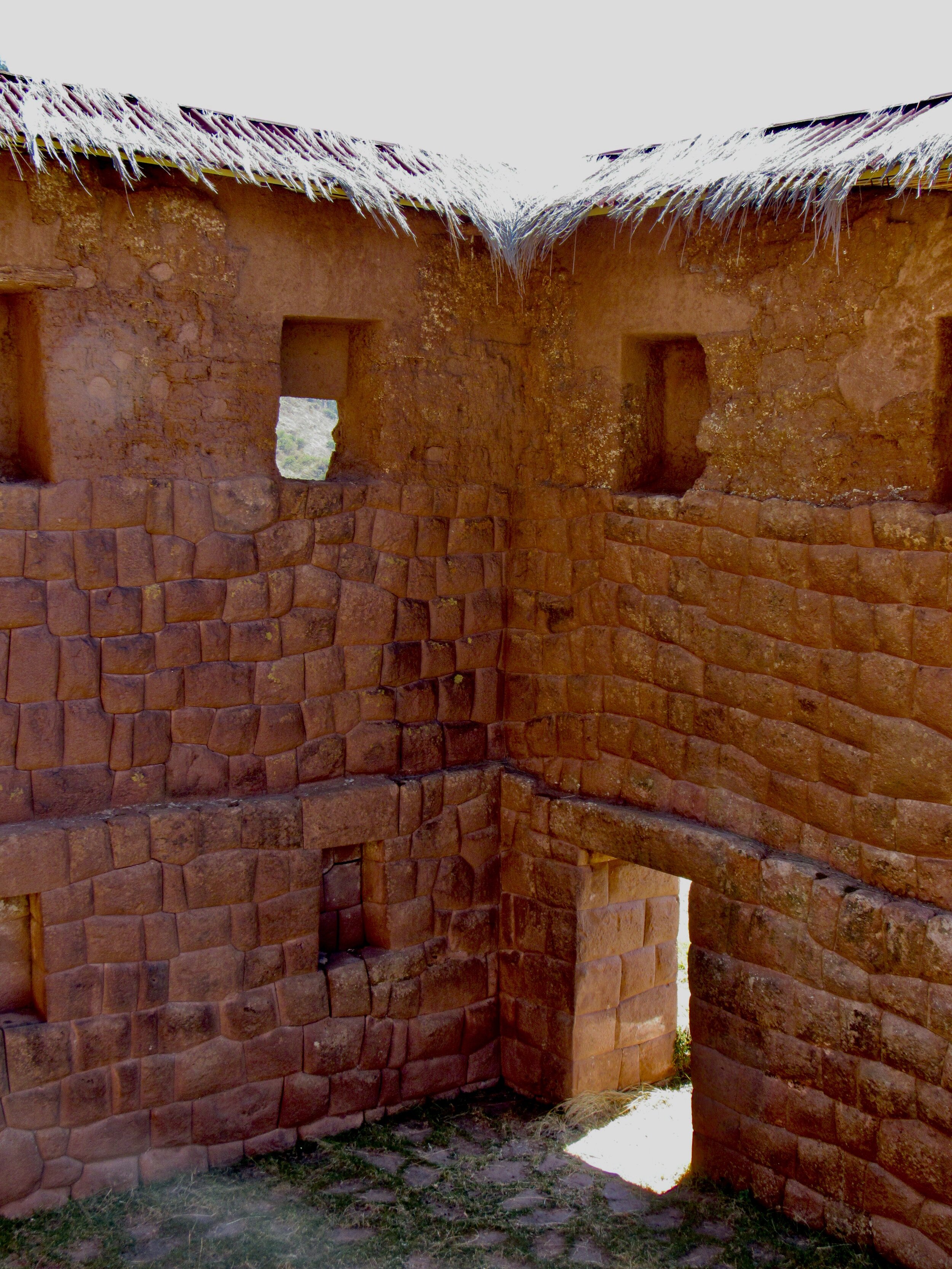
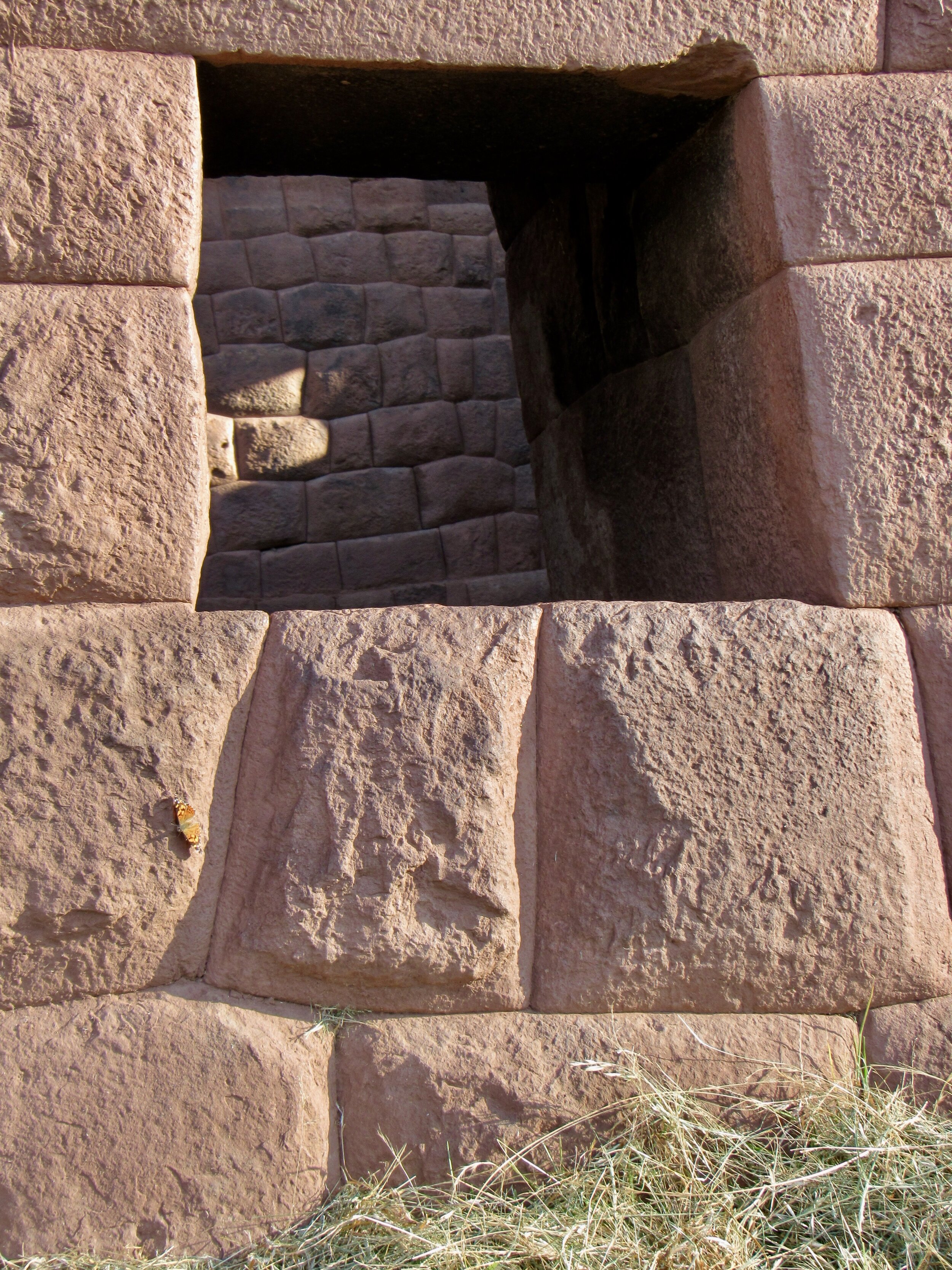
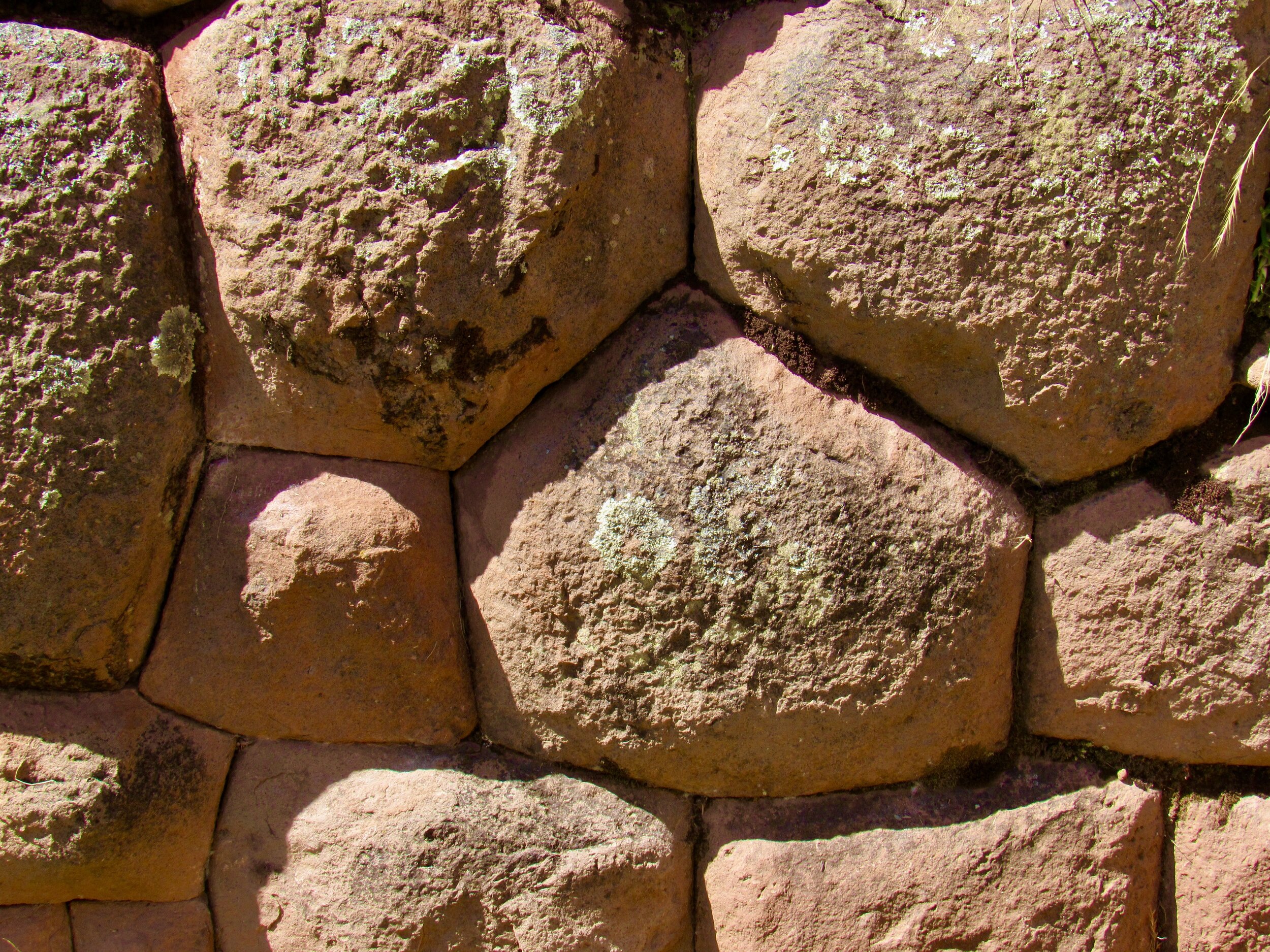
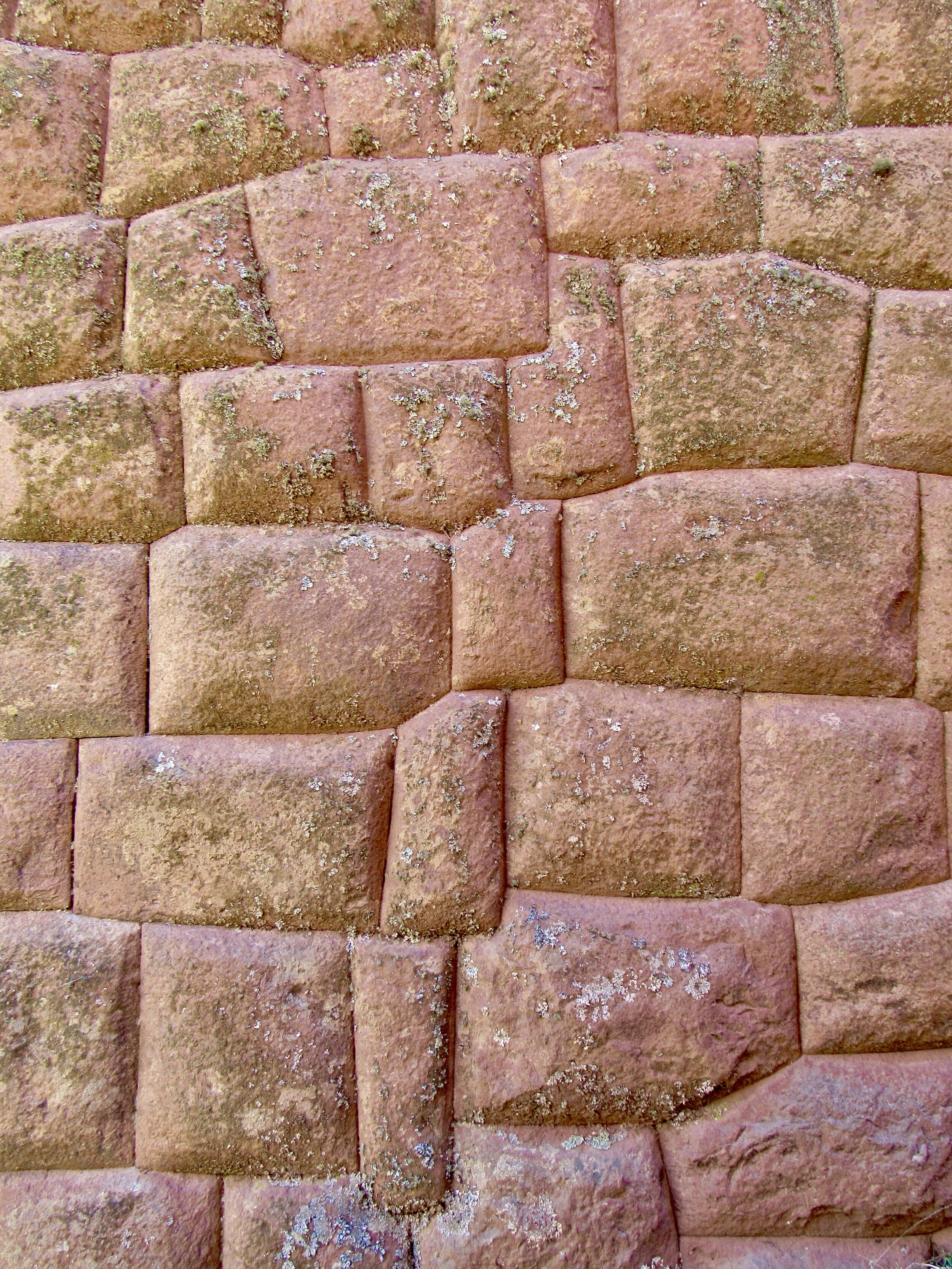
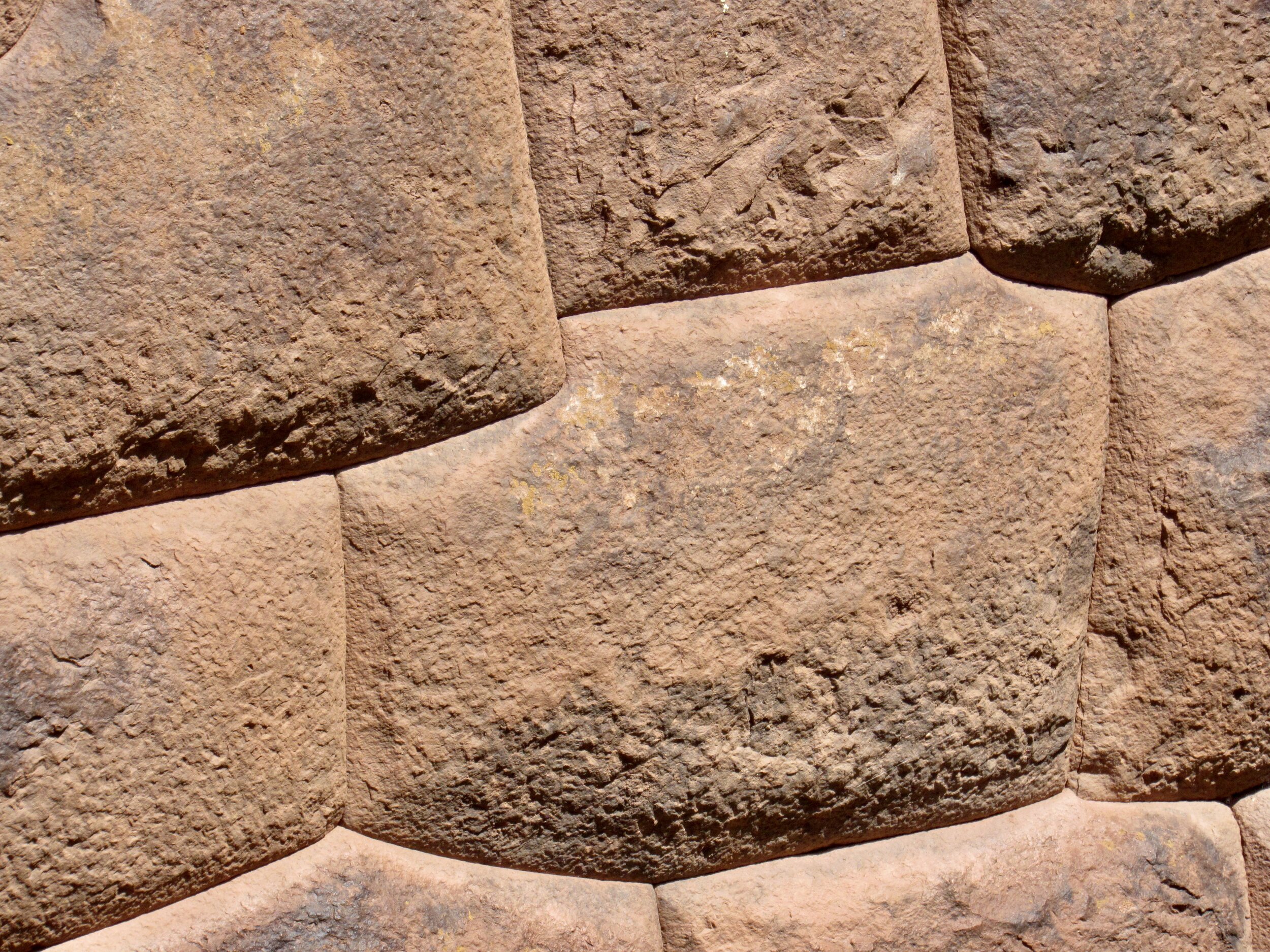
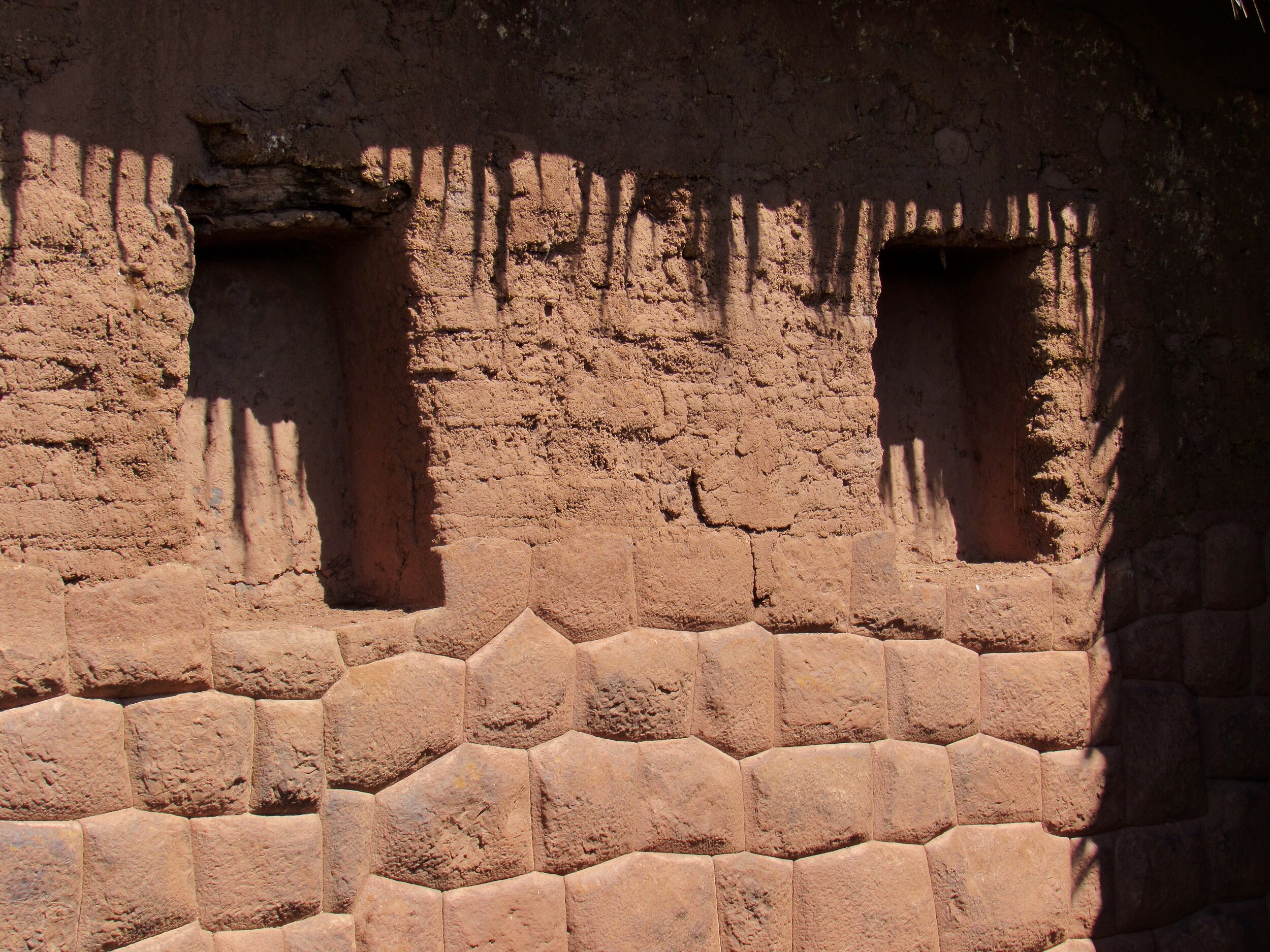
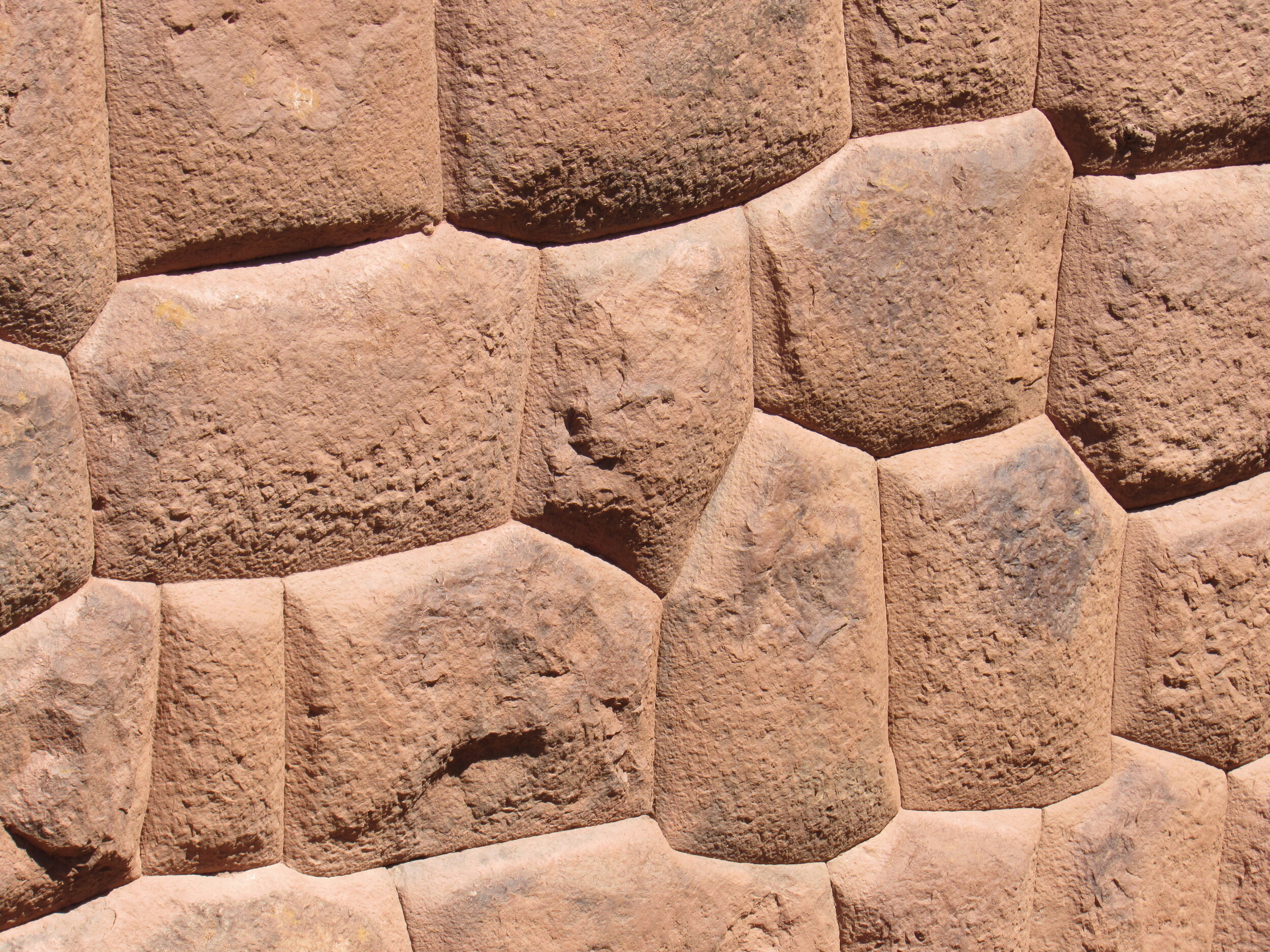
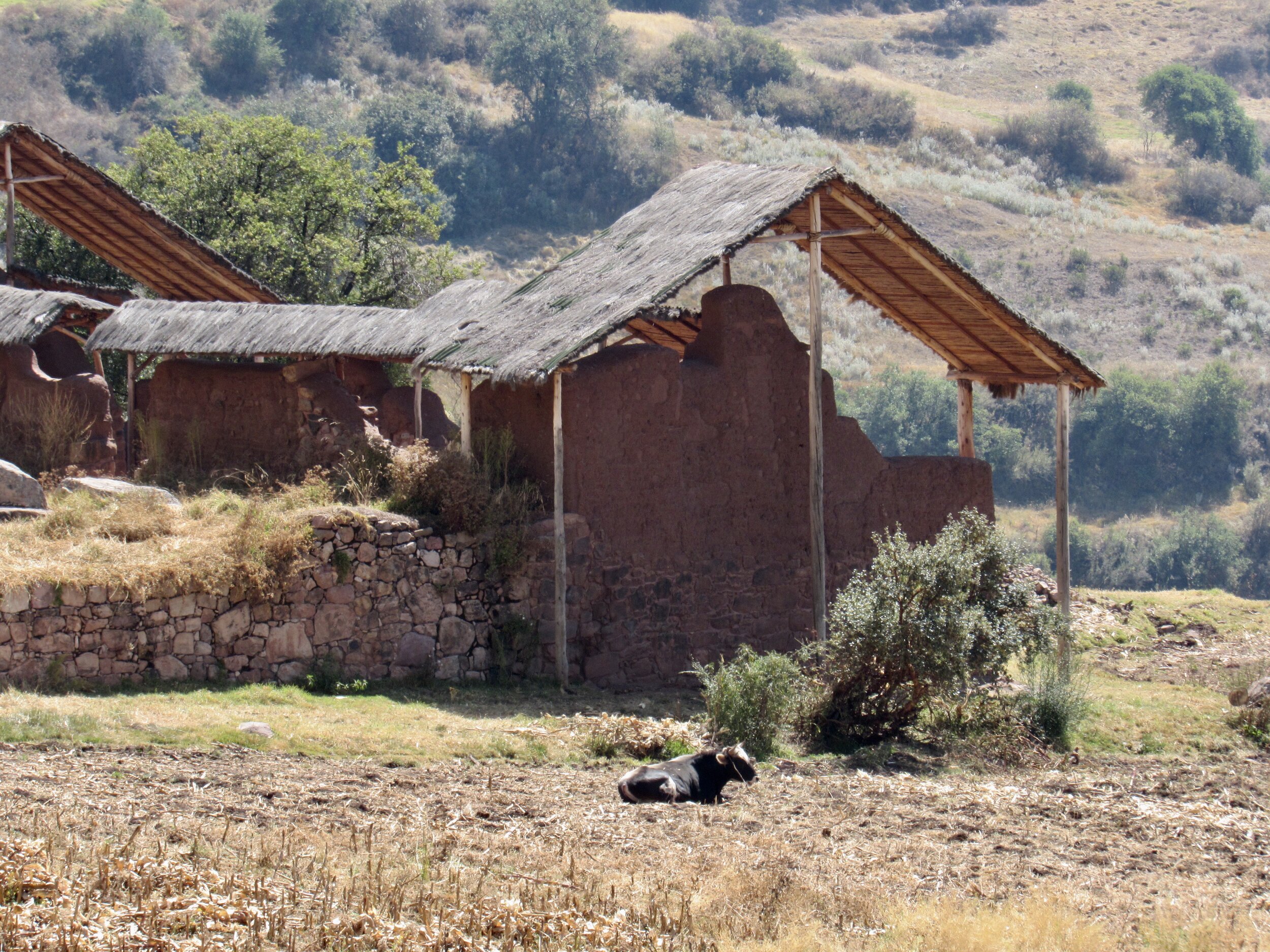
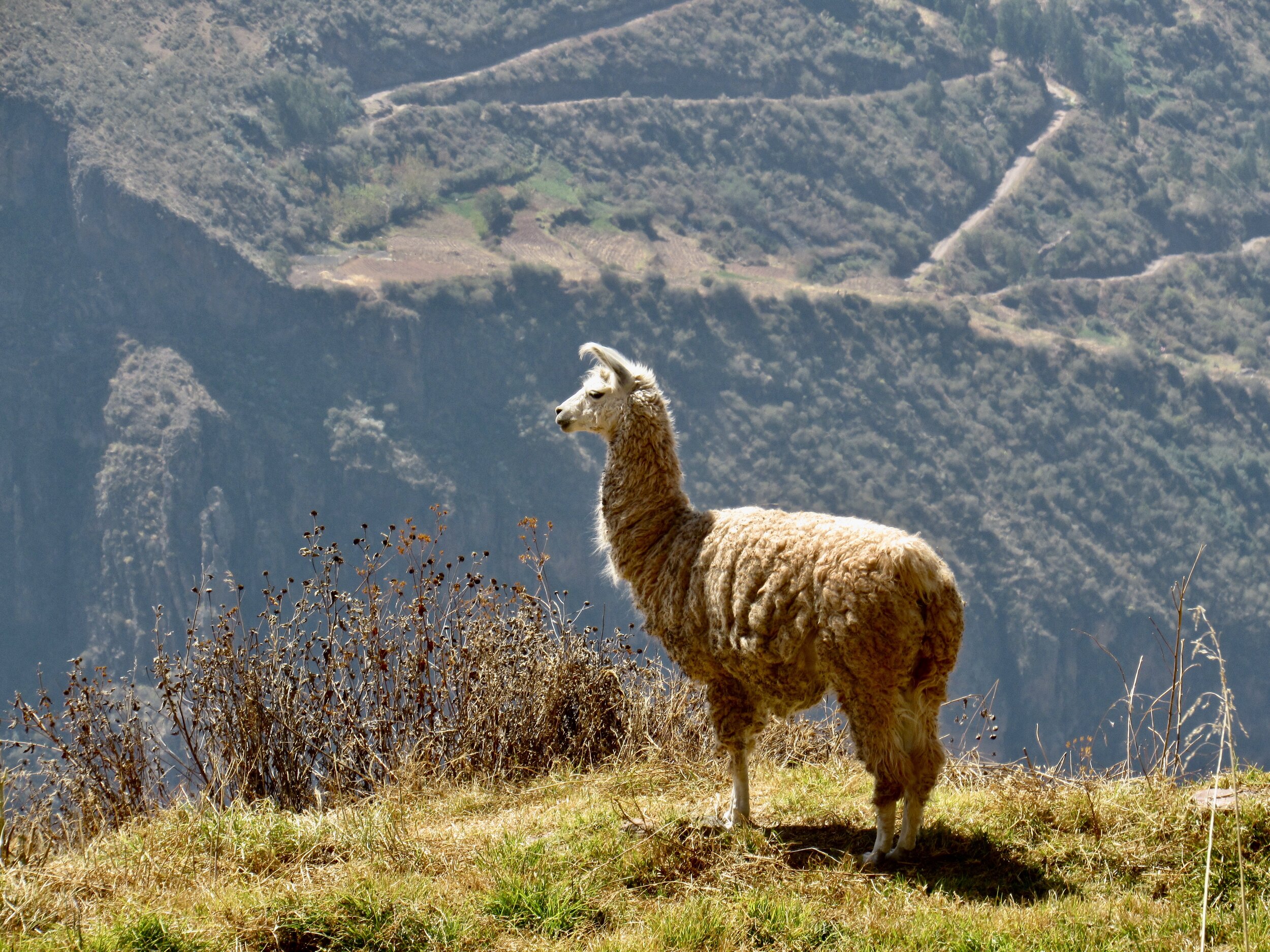
The Ministry of Culture also pays guardians at all of the developed archeological sites. If you plan to camp, they will make sure that you are in the right place and orient you to the area. If you don’t have camping gear, cross the plaza, go past Wiracocha’s residence and follow a path around the hillside to a small community. Three or four families live here and all of them have adapted to the tourists who started coming to Huchuy Q’osqo in the 1990s. Two of them offer lodging and one also has a trout pond.
You can do this as a day hike, but I highly recommend taking the time to spend a night here. Watching the sunset over the terraces and being there for the early morning quiet are definitely worth it. I saw lots of birds, including cara cara falcons and a buck deer. With so little development in the area, it’s the perfect spot to enjoy the mountain calm and imagine what the place was like when it was first being built, over 500 years ago.








